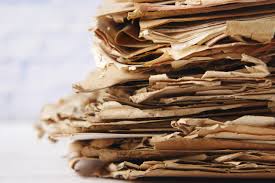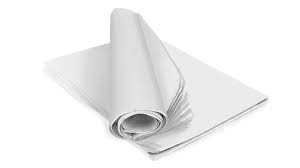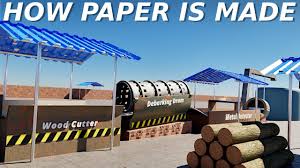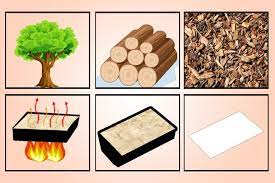In today’s fast-paced, digital world, the value of paper may seem diminished, but its allure persists, weaving through generations as a symbol of tradition, craftsmanship, and authenticity. Let’s delve into the timeless appeal of paper and explore why it continues to hold a special place in our hearts and homes.
- Tactile Beauty: There’s something inherently satisfying about the tactile experience of holding a piece of paper in your hands. Whether it’s the smooth texture of fine stationery or the satisfying weight of a well-crafted notebook, paper engages our senses in a way that digital screens cannot replicate. From the rustle of pages turning to the crisp feel of fresh parchment, each encounter with paper is a sensory delight.
- Unleashing Creativity: Paper serves as a blank canvas upon which we unleash our creativity and imagination. From the intricate brushstrokes of a watercolor painting to the flowing lines of calligraphy, paper provides a medium for artistic expression that is as diverse as it is limitless. Whether you’re jotting down ideas in a notebook or sketching out designs on a drafting table, the blank page holds the promise of infinite possibilities.
- A Timeless Tradition: Throughout history, paper has played a pivotal role in preserving and disseminating knowledge, culture, and tradition. From ancient scrolls and illuminated manuscripts to modern-day books and newspapers, paper has been the medium through which ideas are transmitted across time and space. In an age of digital ephemera, the enduring presence of paper serves as a tangible link to our past and a testament to the enduring power of tradition.
- Personal Connections: In an era dominated by impersonal digital communication, handwritten notes and letters hold a special significance. Whether it’s a heartfelt thank-you card or a love letter penned with care, the personal touch of handwritten correspondence conveys sincerity and thoughtfulness in a way that emails and text messages cannot replicate. In a world where connections are increasingly fleeting, the permanence of ink on paper fosters deeper bonds and lasting memories.
- Environmental Responsibility: While digital alternatives offer convenience and efficiency, paper remains a renewable and sustainable resource when responsibly sourced and managed. From recycled notebooks to tree-free paper alternatives, eco-conscious consumers have a growing array of options to reduce their environmental footprint while still enjoying the benefits of paper-based products.
In conclusion, the allure of paper lies not only in its tangible beauty and timeless tradition but also in its ability to foster creativity, preserve personal connections, and promote environmental responsibility. As we navigate an increasingly digital world, let us not overlook the enduring charm of paper and the profound impact it continues to have on our lives and communities. Embrace the tactile pleasures of paper, celebrate its rich history, and discover the beauty of tradition in a digital age.


Exploring the Origins of Paper: From Fiber to Finished Product
Have you ever wondered where the paper that fills our notebooks, lines our shelves, and fills our printers comes from? The journey of paper production is a fascinating one, rooted in centuries of tradition and innovation. Let’s take a closer look at the process and discover the origins of this ubiquitous material.
- Raw Materials: Paper production begins with the careful selection of raw materials, primarily cellulose fibers derived from plants. While wood pulp is the most common source of cellulose fibers, paper can also be made from recycled paper, cotton, hemp, and other plant-based materials. Each source brings its own unique qualities to the finished product, from the smoothness of wood pulp to the durability of cotton fiber.
- Pulping: Once the raw materials are harvested or collected, they undergo a process called pulping, where the fibers are separated from other components such as lignin and hemicellulose. This can be done mechanically, through grinding and refining, or chemically, using solvents and heat. The resulting pulp forms the foundation of the papermaking process, providing the raw material from which paper sheets are formed.
- Formation: The next step in paper production is the formation of the paper sheet itself. This is typically done on a paper machine, where the pulp is diluted with water and spread evenly across a moving wire mesh screen. As the water drains away, the fibers begin to bond together, forming a continuous sheet of wet paper. This sheet is then pressed between rollers to remove excess water and improve its density and smoothness.
- Drying and Finishing: Once formed, the wet paper sheet undergoes a series of drying processes to remove the remaining moisture. This can be accomplished through air drying, where the paper is passed through heated rollers or dried in large kilns. After drying, the paper may undergo additional treatments such as calendering (smoothing), coating (for glossy finishes), or sizing (to improve printability and resistance to ink).
- Packaging and Distribution: The final step in the paper production process involves cutting the large sheets into smaller, more manageable sizes and packaging them for distribution. Depending on the intended use, paper may be packaged in reams for office printing, rolls for commercial printing, or bundled into notebooks, journals, and other finished products. From here, the paper makes its way to retailers, printers, and consumers around the world, ready to fulfill its myriad of purposes.
In conclusion, paper production is a complex and multifaceted process that begins with the careful selection of raw materials and culminates in the creation of a versatile and indispensable material. From the fibers of plants to the finished product on our shelves, the journey of paper production is a testament to human ingenuity and the enduring appeal of this humble yet indispensable material.


Unveiling the Tree Species Behind Paper Production
Have you ever wondered which types of trees are used to create the paper products we use every day? The choice of tree species plays a crucial role in determining the characteristics of the final paper, from its texture and strength to its environmental impact. Let’s delve into the common tree species employed in papermaking and explore their unique qualities.
- Softwood Trees: Softwood trees, primarily conifers, are among the most commonly used species in paper production due to their long fibers and high cellulose content. Species such as pine, spruce, fir, and hemlock are prized for their strength and durability, making them ideal for producing a wide range of paper products, including newspapers, magazines, and packaging materials. The long fibers of softwood trees contribute to the tensile strength of the paper, allowing it to withstand the rigors of printing and handling.
- Hardwood Trees: Hardwood trees, including species like oak, maple, birch, and eucalyptus, are also used in papermaking, albeit to a lesser extent than softwood trees. Hardwoods typically have shorter fibers compared to softwoods but offer other desirable qualities such as smoothness, brightness, and opacity. Hardwood pulp is often blended with softwood pulp to achieve the desired balance of strength and printability in various paper products, including writing paper, envelopes, and tissue paper.
- Recycled Paper: In addition to virgin wood pulp, paper can also be made from recycled paper fibers derived from post-consumer waste or pre-consumer waste generated during the manufacturing process. Recycling paper helps reduce the demand for virgin wood pulp and minimizes the environmental impact of paper production. Recycled paper can be made from a variety of sources, including old newspapers, magazines, office paper, and cardboard boxes, making it a sustainable alternative to conventional papermaking.
- Specialty Fibers: In recent years, there has been growing interest in using alternative fiber sources for papermaking, including agricultural residues, non-wood plants, and even textile waste. These specialty fibers offer unique characteristics and environmental benefits, such as faster growth rates, lower environmental footprint, and reduced pressure on forests. Examples of specialty fibers used in papermaking include bamboo, kenaf, sugarcane bagasse, and recycled cotton.
- Environmental Considerations: The choice of tree species for papermaking has significant implications for the environment, including deforestation, habitat loss, and biodiversity conservation. Sustainable forestry practices, such as tree planting, reforestation, and forest certification, play a crucial role in ensuring the long-term sustainability of paper production. By responsibly managing forest resources and promoting conservation efforts, the paper industry can minimize its environmental impact and contribute to the preservation of forest ecosystems worldwide.
In conclusion, the type of tree species used in papermaking has a profound impact on the characteristics of the final paper product, as well as its environmental footprint. Whether derived from softwood or hardwood trees, recycled paper fibers, or alternative sources, each tree species brings its own unique qualities to the papermaking process. By embracing sustainable forestry practices and exploring innovative fiber sources, the paper industry can continue to meet the growing demand for paper products while safeguarding the health and integrity of our planet’s forests.










